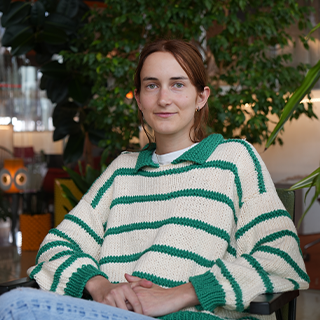A robot is now delivering sermons in Japan: the beginning of AI and religion?
In early September, Kodaiji, a 400-year-old Buddhist temple in Kyoto, Japan, revealed its new priest—a robot named Mindar. Made of aluminium and silicone, Mindar was designed to look like Kannon, the Buddhist deity of mercy. In a country where religion is on the decline, this $1 million robot priest is a futuristic attempt at rekindling people’s faith. Is merging AI with religion a good idea? Could it change religion as we know it?
Religion has always been a sensitive topic, while AI has stirred its fair share of controversy recently. Combining the two together by incorporating robotics in religion sounds like an idea with great potential to some, and like a very dangerous game to others. When it was first revealed in Japan, Mindar was compared to Frankenstein’s monster. And yet, people like Tensho Goto, the temple’s chief steward, were positive about it. “This robot will never die; it will just keep updating itself and evolving.(…) With AI we hope it will grow in wisdom to help people overcome even the most difficult troubles. It’s changing Buddhism,” declared Goto when Mindar was revealed.
At the moment, Mindar the robot priest is not AI-powered; it simply recites the same sermon about the Heart Sutra over and over. But its creators revealed that they’re working on giving it machine-learning capabilities that would enable Mindar to give advice to worshippers’ spiritual and ethical problems. As crazy as it sounds, Mindar is not the first example of robots and animated objects getting involved in religion.
Screen Shot spoke to Adrienne Mayor, a research scholar in Classics and the History and Philosophy of Science and Technology Program at Stanford, who wrote Gods and Robots: Myths, Machines, and Ancient Dreams of Technology. Mayor told us about the many links between religion and robots from ancient Greece to today, and her opinion on robot priests like Mindar. “Religious automatons were intended to evoke awe and display power in antiquity. We should be aware that similar motives could underlie using AI and robots today,” Mayor says.
When talking about the possibility of AI being implemented in religion, Mayor poses the questions that everyone should be asking themselves: “How can one trust that the machine learning and algorithms would always be beneficial to the users and not to the makers and deployers of robot priests? Could AI distinguish between immoral acts and moral values? Could AI discern motives and intentions and recognise sincere remorse, experience empathy, or truly embody the human qualities of mercy and forgiveness?” The doubts and uncertainty that surround this technology explain why people feel uncomfortable about the prospect. Some religions, however, might be better fitted than others, explains Mayor, “To Buddhists it doesn’t matter whether the force turning the wheel has consciousness or not. Religions that value internal reflection, intentional heartfelt prayer, spiritual guidance based on experience and empathy, and ethical decision making in complex social situations don’t seem particularly compatible with robots and AI.”
Another example of robots being used in religion is Sanctified Theomorphic Operator (SanTo), a figurine shaped like a Catholic saint. Created by roboticist Gabriele Trovato, SanTo answers people’s worry with verses from the Bible, specifically providing comfort and assistance to the elderly. This shows that certain positive potential that AI could bring to religion can’t be completely ignored—robots can perform religious rituals when human priests can’t, and hey can reach more worshippers.
The negative ramifications, however, seem to outnumber the positive ones. Are we willing to alter religion, a topic that has created so much chaos, and still does? By giving these robots AI machine-learning abilities, we would give them the power to tell us how to feel, how to ‘repent’, and what to do. The ethical and spiritual responses from those religious robots will need to be carefully crafted for worshippers to finally trust them. Robot priests are happening, but before preaching it, we need to look at how it will be designed, implemented, and received.






